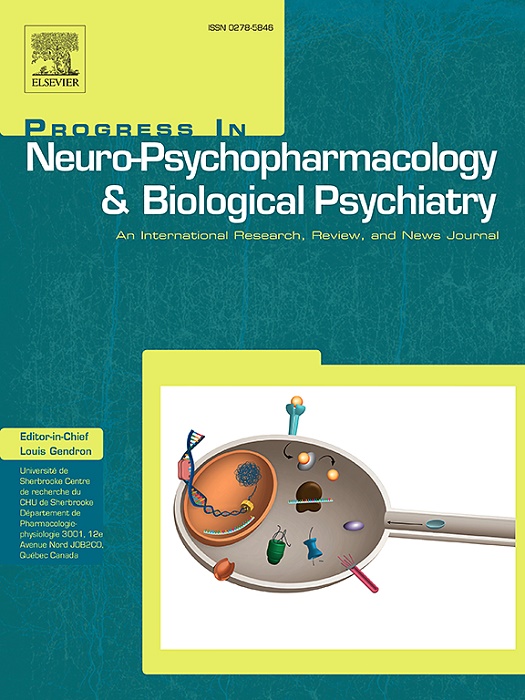精神分裂症神经发育小鼠模型F2代性别依赖性行为和神经元改变
IF 3.9
2区 医学
Q1 CLINICAL NEUROLOGY
Progress in Neuro-Psychopharmacology & Biological Psychiatry
Pub Date : 2025-08-21
DOI:10.1016/j.pnpbp.2025.111476
引用次数: 0
摘要
精神分裂症是一种受遗传和环境因素影响的复杂神经发育障碍。利用母体甲基氧甲醇乙酸(MAM)暴露模型,我们研究了F2代的行为、神经元和神经胶质的改变,以探索产前神经发育中断的代际影响。我们的研究表明,产前暴露于MAM可诱导F2后代的精神分裂症样表型的跨代传递。雄性和雌性F2小鼠都表现出感觉运动门控和识别记忆障碍的缺陷,反映了精神分裂症中常见的核心认知功能障碍。值得注意的是,男性特异性表型以风险规避缺陷的形式出现,伴随着海马CA1区neun阳性成熟神经元和parvalbumin阳性中间神经元的显著减少。相比之下,两性的齿状回神经发生受损,而胶质细胞(小胶质细胞和星形胶质细胞)未受影响,表明神经元特异性易受代际破坏。这些发现强调了精神分裂症小鼠模型后代中性别依赖的神经元和行为后果,为代际神经发育中断及其对精神分裂症样表型的潜在贡献提供了见解。本文章由计算机程序翻译,如有差异,请以英文原文为准。
Sex-dependent behavioral and neuronal alterations in the F2 generation of a neurodevelopmental mouse model for schizophrenia
Schizophrenia is a complex neurodevelopmental disorder influenced by genetic and environmental factors. Using a maternal methylazoxymethanol acetate (MAM) exposure model, we investigated behavioral, neuronal, and glial alterations in the F2 generation to explore the intergenerational effects of prenatal neurodevelopmental disruption. Our study demonstrates that prenatal MAM exposure induces the transgenerational transmission of schizophrenia-like phenotypes in F2 offspring. Both male and female F2 mice exhibited deficits in sensorimotor gating and recognition memory impairments, reflecting core cognitive dysfunctions commonly observed in schizophrenia. Notably, male-specific phenotypes emerged in the form of risk-avoidance deficits, accompanied by significant reductions in NeuN-positive mature neurons and parvalbumin-positive interneurons in the CA1 region of the hippocampus. In contrast, dentate gyrus neurogenesis was impaired in both sexes, while glial cells (microglia and astrocytes) remained unaffected, indicating a neuron-specific vulnerability to intergenerational disruptions. These findings highlight sex-dependent neuronal and behavioral consequences in the offspring of a schizophrenia mouse model, providing insights into intergenerational neurodevelopmental disruptions and their potential contributions to schizophrenia-like phenotypes.
求助全文
通过发布文献求助,成功后即可免费获取论文全文。
去求助
来源期刊
CiteScore
12.00
自引率
1.80%
发文量
153
审稿时长
56 days
期刊介绍:
Progress in Neuro-Psychopharmacology & Biological Psychiatry is an international and multidisciplinary journal which aims to ensure the rapid publication of authoritative reviews and research papers dealing with experimental and clinical aspects of neuro-psychopharmacology and biological psychiatry. Issues of the journal are regularly devoted wholly in or in part to a topical subject.
Progress in Neuro-Psychopharmacology & Biological Psychiatry does not publish work on the actions of biological extracts unless the pharmacological active molecular substrate and/or specific receptor binding properties of the extract compounds are elucidated.

 求助内容:
求助内容: 应助结果提醒方式:
应助结果提醒方式:


